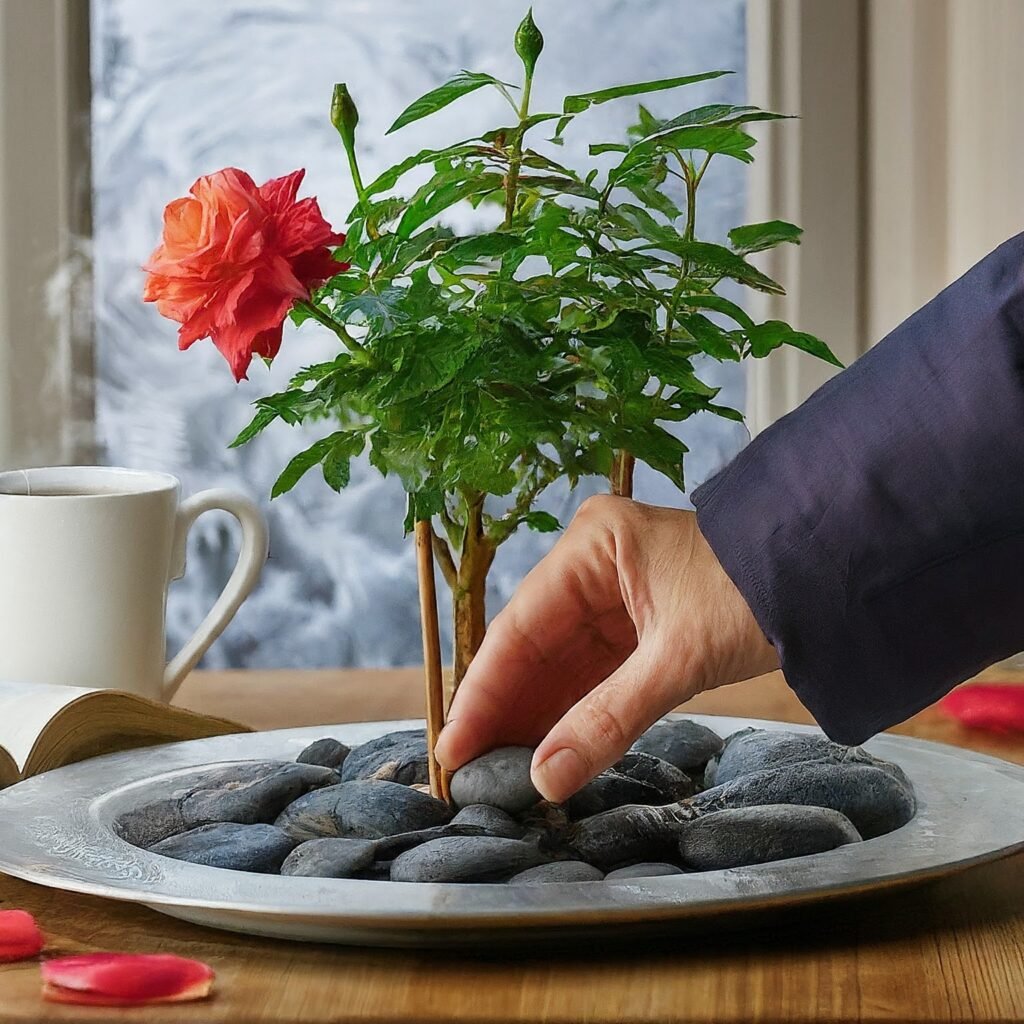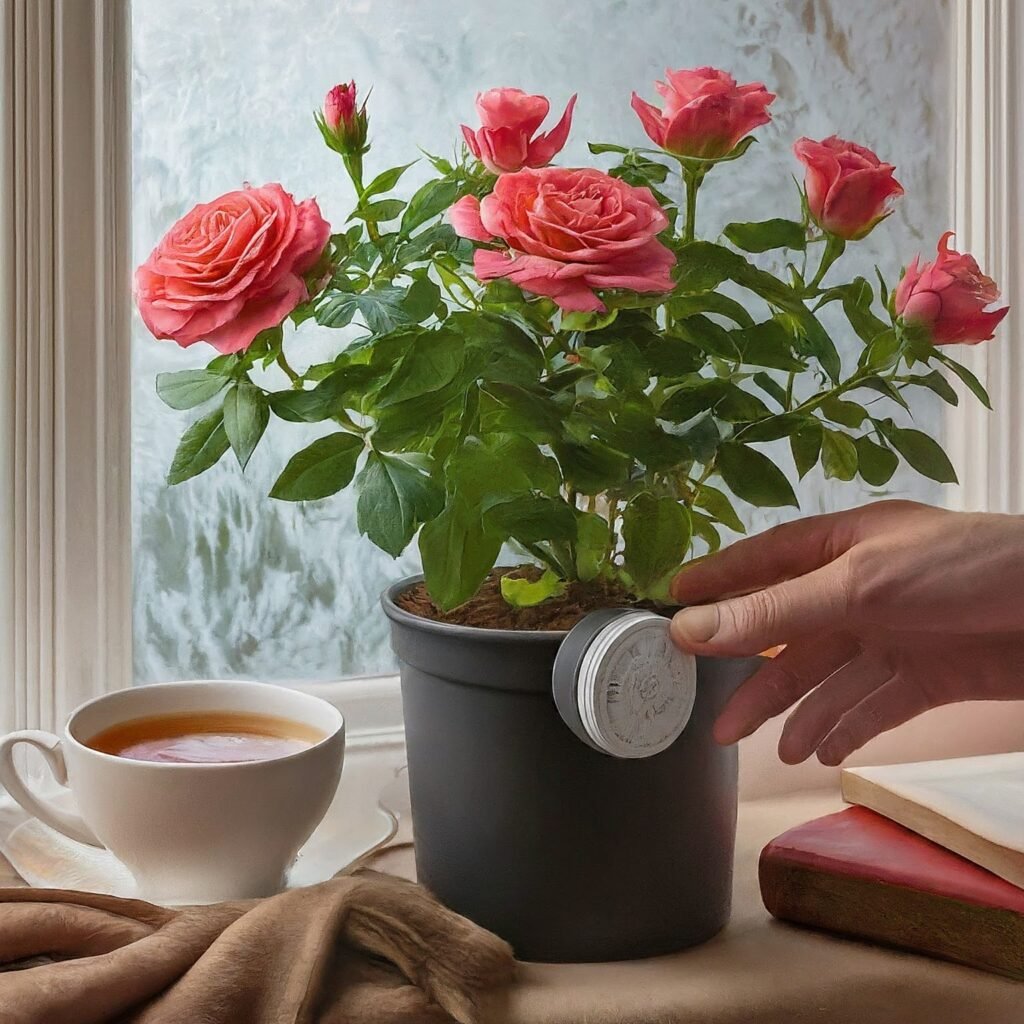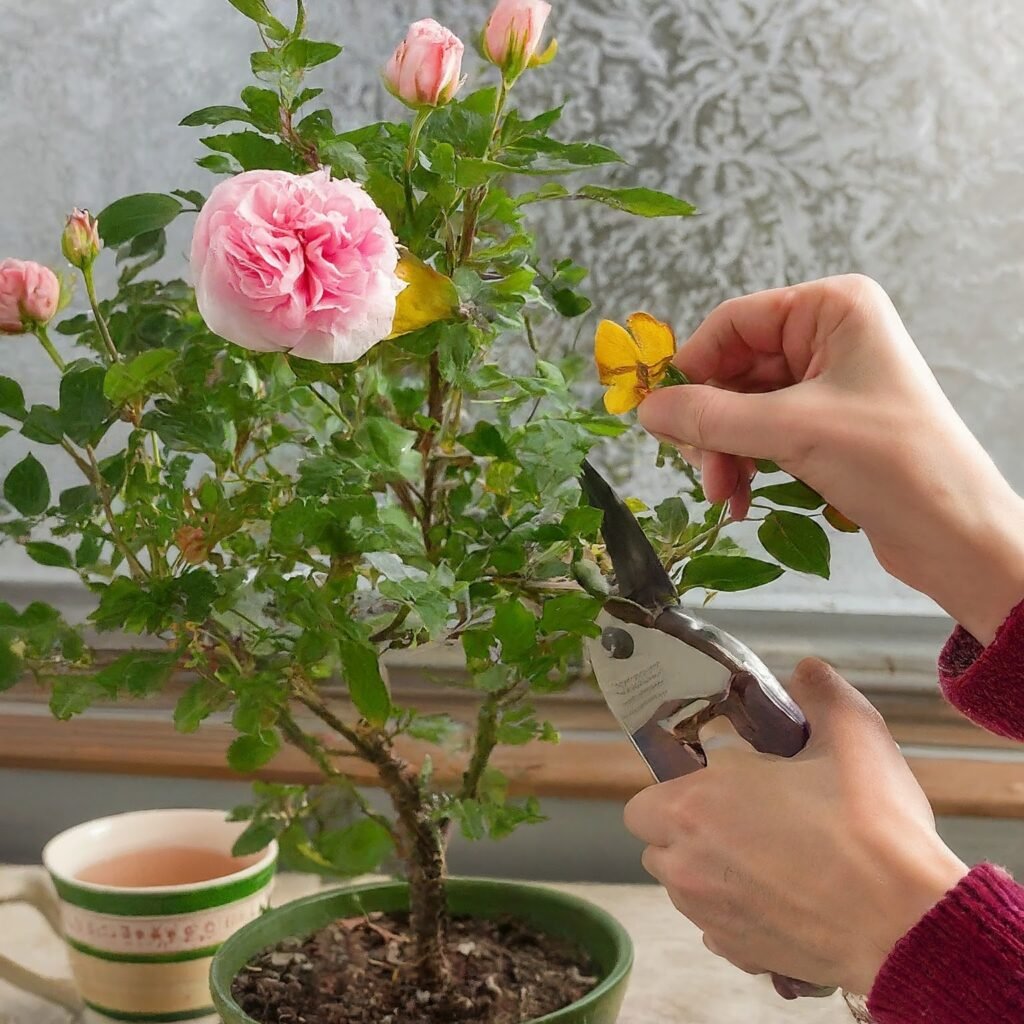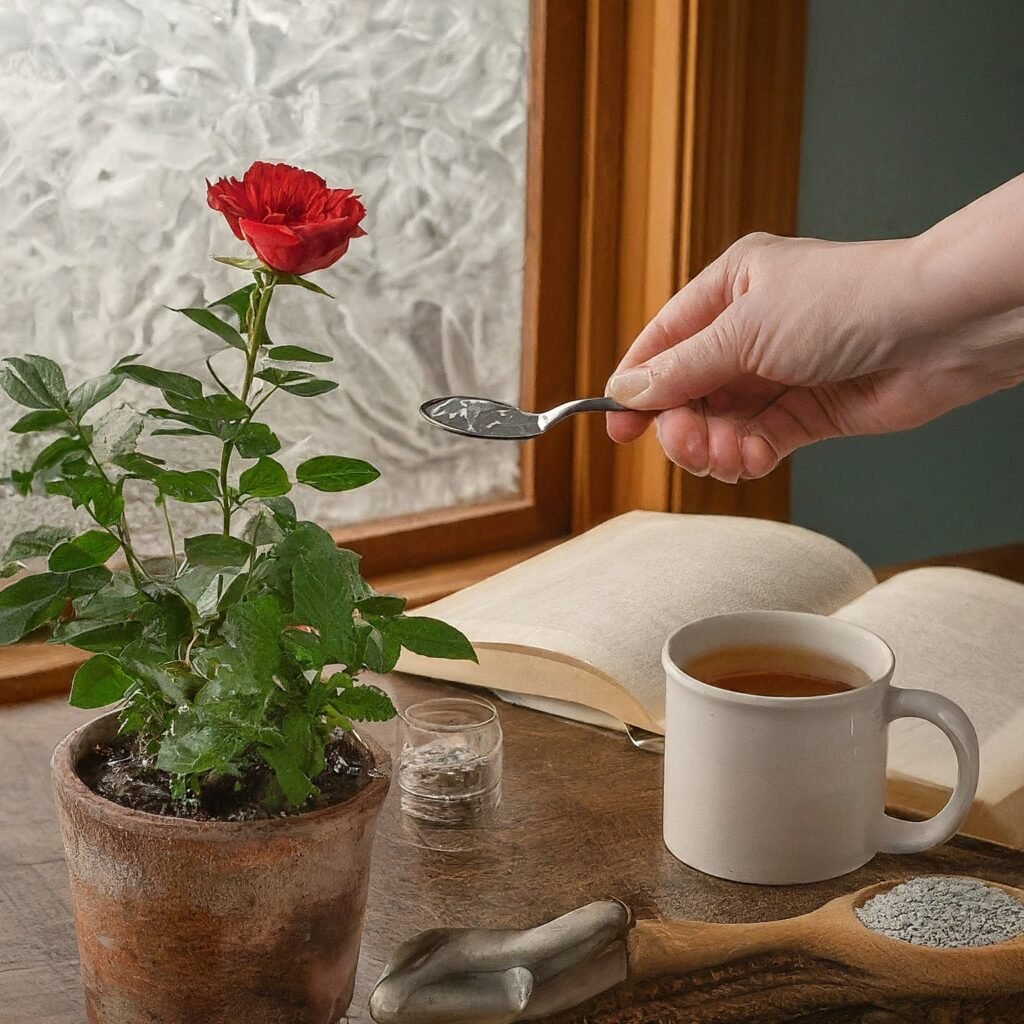
Last winter, my indoor rose plant, Rosie, decided to put on a drama that would put a soap opera to shame. I remember it clearly: one day, he was thriving, and the next day, he looked like he saw a ghost! I panicked, thinking I’d have to host a tree funeral in mid-January. But after much experimentation (and a few hilarious accidents), I discovered the secret to keeping an indoor rose plant happy through the winter. Here are my top 7 tips to help your roses bloom without the drama!
1. Provide Adequate Light
When I first brought Rosie, my indoor rose plant, into the house, I quickly learned that roses have a serious love affair with sunlight. It was almost like she was whispering, “Give me more light, please!” I placed her near a south-facing window, and she soaked up the sun like a beach goer on a summer day. On those dreary winter days when sunlight was scarce, I introduced her to grow lights. These nifty lights acted like a mini sun, giving her the boost she needed to stay vibrant.
Indoor rose plants need at least six hours of sunlight daily to thrive. If you notice your rose stretching toward the light or looking a bit leggy, it’s a sign she’s not getting enough. Consider rotating the plant regularly to ensure all sides get their fair share of light. Without sufficient light, roses can become weak and less likely to bloom, turning into sad, spindly versions of their former selves.
2. Maintain Proper Humidity

Ensuring Rosie, my indoor rose plant, stays comfortable with humidity has been a learning process. Rosie prefers a balanced environment—not too dry and not too humid. During winter, when indoor heating dries the air, Rosie shows signs of discomfort with her leaves becoming crispy and curling.
To keep Rosie happy, I’ve discovered effective methods. Using a humidifier works wonders; it keeps the air around Rosie moist, preventing her leaves from drying out. I aim to maintain humidity levels between 40% to 60%, which Rosie seems to thrive in. If a humidifier isn’t available, placing a shallow tray of water and pebbles under Rosie’s pot helps maintain moisture. As the water evaporates, it naturally increases humidity around her, creating a more comfortable environment.
Maintaining this balance is crucial. Excess humidity can lead to mold and fungal issues, while too little can stress Rosie and cause leaf problems. Finding the right level ensures Rosie remains healthy and vibrant, showcasing her beautiful blooms year-round.
3. Water Wisely
Figuring out how much water my indoor rose plant, Rosie, needs has been a learning curve. At first, I was worried about keeping her soil consistently moist, but Rosie showed me that less is often more. Now, I check the top inch of soil regularly. If it feels dry, that’s my cue to water her deeply, letting the soil soak it up.
Good drainage is crucial, too. Rosie’s pot has plenty of holes at the bottom to let excess water escape. After watering, I always make sure to pour out any water left in the saucer underneath her pot. This helps prevent her roots from sitting in water, which could make her sick.
During winter, when the air inside tends to be drier, Rosie doesn’t need as much water as she does in warmer months. This adjustment keeps her leaves green and perky, avoiding problems like yellowing leaves or root rot.
Learning to water Rosie just right has been a lesson in patience and observation. It’s all about paying attention to her signals and giving her what she needs to stay healthy and happy.
4. Temperature Control

Maintaining the ideal temperature for my indoor rose plant, Rosie, is essential, especially as winter sets in. Rosie thrives best in a consistent temperature range of 65-75°F (18-24°C) during the day. At night, she prefers it slightly cooler, around 60°F (15°C).
During the colder months, I ensure Rosie isn’t placed near drafts or direct heat sources like heating vents. These can cause sudden temperature fluctuations, which stress her and affect her health negatively. Instead, I’ve found a stable spot where she enjoys steady temperatures throughout the day and night.
Monitoring and adjusting the temperature around Rosie ensures she remains healthy and vibrant. Providing her with a stable environment supports her growth and encourages the development of her beautiful blooms, even during winter’s chill.
5. Fertilize Sparingly
Feeding my indoor rose plant, Rosie, is a delicate balance, especially during the winter months when her growth slows naturally. Instead of frequent fertilization, I opt for a balanced fertilizer once a month to provide Rosie with essential nutrients without overwhelming her.
Choosing the right fertilizer is crucial. I select a formula designed for flowering plants, ensuring it supports Rosie’s health and promotes vibrant blooms. During winter, I reduce the frequency of fertilization to prevent nutrient buildup in the soil, which can harm Rosie’s root system.
By fertilizing sparingly and strategically, Rosie maintains a healthy equilibrium. This approach not only sustains her through the colder season but also prepares her for robust growth when spring arrives, ensuring she continues to grace my home with her beautiful flowers year-round.
6. Prune Regularly for Indoor Rose Plant

Maintaining the health and beauty of my indoor rose plant, Rosie, involves regular pruning. This routine not only enhances Rosie’s appearance but also supports her overall growth by removing dead or yellowing leaves.
I make it a habit to inspect Rosie weekly, using clean, sharp scissors to trim any damaged or diseased foliage. This practice not only keeps Rosie looking tidy but also prevents pests and diseases from taking hold. Additionally, pruning encourages new growth, ensuring Rosie remains vigorous and thriving.
During the winter months, Rosie’s growth naturally slows down. I focus on light pruning to shape her and remove any overcrowded or crossing branches. This helps maintain an open structure that promotes airflow, reducing the risk of fungal issues.
By pruning regularly and attentively, Rosie stays healthy and resilient, ready to bloom beautifully when spring returns. It’s a simple yet effective way to care for her year-round and enjoy her vibrant blooms.
7. Check for Pests in Indoor Rose Plant

Keeping a watchful eye on my indoor rose plant, Rosie, for pests is not just about her health—it’s a detective mission to ensure she stays vibrant and pest-free. Sneaky characters like spider mites and aphids can quickly wreak havoc on Rosie’s delicate leaves if they go unnoticed. That’s why I embark on regular inspections, scouring every leaf and stem for any signs of these troublemakers.
When it comes to pest control, I lean towards natural superheroes like insecticidal soap or neem oil, which swoop in to save the day without harming Rosie or the environment. If I catch any pests red-handed, I swiftly intervene with a gentle removal or a soothing bath of soapy water.
Winter, with its cozy indoors, can sometimes invite pests to cozy up too. So, I remain vigilant, maintaining my watchful eye to intercept any unwanted guests before they cause trouble. This proactive care ensures Rosie continues to dazzle with healthy foliage and blooms, making every inspection a thrilling adventure in plant care.
Regular pest checks aren’t just a chore—they’re part of Rosie’s story, ensuring she thrives and flourishes in our home year-round.
